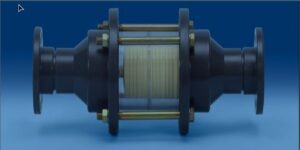Resin Traps & Filter Media Traps
By: Denise UrbansWe just added a page to our website! Urbans Aqua has always offered resin traps but we never thought to add it to the website until we did a podcast about them. Here are a few highlights.
Advantages
- Prevents loss or cross-contamination of resin.
- Protects equipment downstream, such as valves and pumps.
- Can be customized to the application.
Function and Placement of Resin Traps:
- Resin traps act as in-line strainers, capturing debris and preventing it from entering critical system components.
- The ideal placement for resin traps is after ion exchange resin systems – softeners or demineralizers or carbon filters.
- Resin trap usually have acrylic housings so it’s easy to monitor for any signs of resin or debris build-up. ssues.

PVC Plastic Resin Trap
Design
You can customize resin traps to suit specific applications.
- Material Choices include:
• Stainless Steel 304/304L; 316/316L
• PVC / CPVC - Slot sizes ranging from 3 mesh to 400 mesh
Installation Tips:
- Stubbed Out Installation: Resin traps come with pre-installed short lengths of pipe, allowing easy connection to existing piping. PVC resin traps are usually stubbed out.
- Threaded Connections: Resin traps can be made with threaded connections, enabling straightforward installation by threading them into place. Stainless steel resin traps are usually 3″ flanged.
- Important Note: Avoid using resin traps for backwash lines because they can impede flow and create back pressure, which can prevent proper brine draw in water softeners. Back pressure can lead to inefficiencies and potential damage to the softening system.


